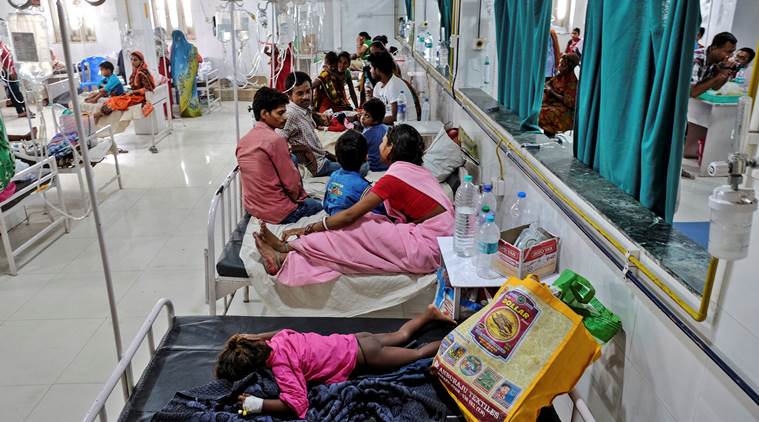
How many more children must die before we notice that our public health services are not just broken, they simply do not exist in whole swathes of India? I speak of the hospital of horrors in Muzaffarpur. I am haunted by the glazed eyes of children lying three and four to a bed with needles stuck in their tiny arms. So, although, many things happened last week that are more appropriate for a political column, I feel compelled to dedicate this column to Bihar’s dead children.
The lives of Indian children are cheap. Experts estimate that 21 children die of preventable diseases every minute. They estimate that 61 of a thousand children born every year do not make it to their fifth birthday. So what was it about the deaths of more than 100 children this time that was somehow so much more horrible than usual? What was it that made it somehow worse than the Gorakhpur horror two summers ago that caused 63 children to die of this same Acute Encephalitis Syndrome because the hospital ran out of oxygen? I believe it is because India has changed. Things that were tolerated just three years ago no longer are. One of the things that is now completely intolerable is that India should have some of the best private hospitals in the world and, at the same time, some of the worst public hospitals.
What is no longer acceptable is that our politicians and high officials should be permitted criminal neglect of government health services, simply because they never have to use them. So the first reform that the Prime Minister should order is to make it compulsory for all officials, elected and unelected, to use only government hospitals. When they see their own sick children lying crammed four to a bed on grimy sheets in filthy, crowded hospitals, conditions will immediately improve. When their wives and daughters are forced to sit on the unwashed floors of government hospitals, hoping and praying that their children somehow manage to survive, conditions will immediately improve.
They will probably improve last in Bihar because it has traditionally been governed by political leaders who lack basic humanity. And, because the vast majority of the people of Bihar are so mired in extreme poverty that they are forced to forget horrific tragedies like the one six years ago in the village of Dharmashati Gandaman when 23 healthy children died because of a poisonous midday meal. That horror also happened on the watch of the man they call ‘Sushasan Babu’ (Mr. Governance) and the people forgave him so quickly that he became chief minister again in 2015.
This time let’s hope that even if Nitish Kumar quickly forgets the criminal negligence of his government, the Prime Minister does not. If Narendra Modi in his second term gives healthcare the kind of intense concentration he gave the Swachh Bharat campaign in his first term it is possible that Indian children will finally stop dying of preventable diseases. The excuse that healthcare is a state subject no longer works. Modi has chief ministers today governing almost every major Indian state, so, if he orders them to make the radical changes that are needed in primary healthcare, they will be forced to make them.
They can also be ordered to widen the meaning of Swachh Bharat by taking it beyond sanitation. The disease that killed the children in Bihar is caused by mosquitoes who breed, as everyone knows, in stagnant water. If Swachh Bharat volunteers can extend their activities to teaching people about the dangers of dirty water, as they have done with poor sanitation, more and more rural Indian children could soon start living beyond their fifth birthday.
There are other reforms that are urgently needed. For a start something needs to be done to end the license raj in medical education that prevents desperately needed new medical colleges from being built. If governments cannot find the money to build them, then they must allow private investment. Why should there be such a desperate shortage of medical colleges that young Indians wanting to enter the medical profession are forced to go to other countries to study medicine?
In my personal opinion, though, the step that can bring about the most change is to make it compulsory for political leaders and high officials to use only government hospitals, clinics and primary health centres. Why should they be allowed excellent private health services when it is they who are directly responsible for creating the abysmal facilities that India’s poorest, most vulnerable citizens are forced to rely upon? It is time as well to totally ban Indian officials from flying off to Europe and the United States for medical procedures that are now available in India. If these bad old habits continue in the ‘new India’, there will be no new India.
This article first appeared in the print edition on June 23, 2019, under the title Fifth column: Terminal healthcare